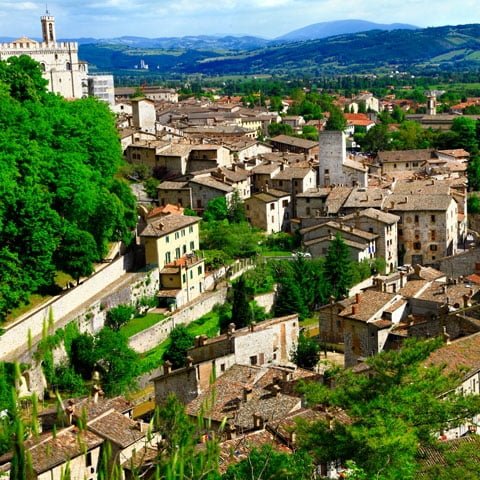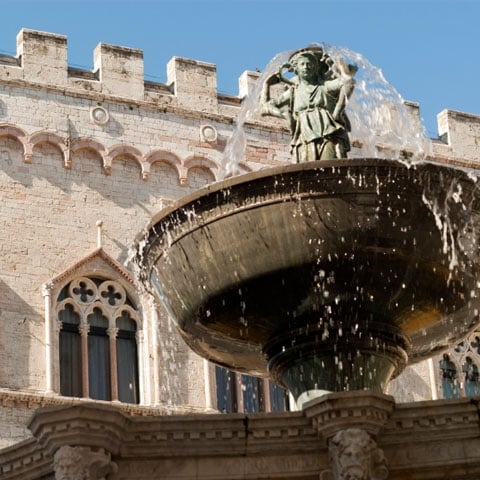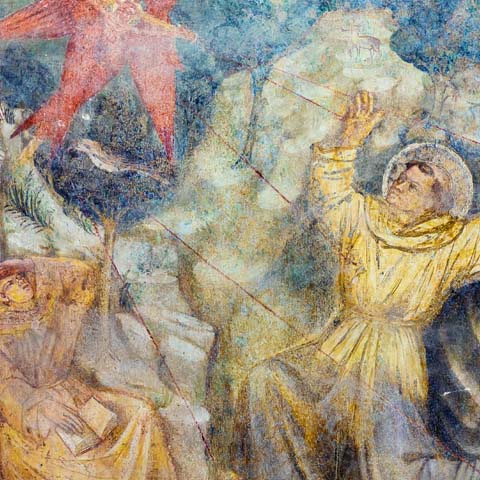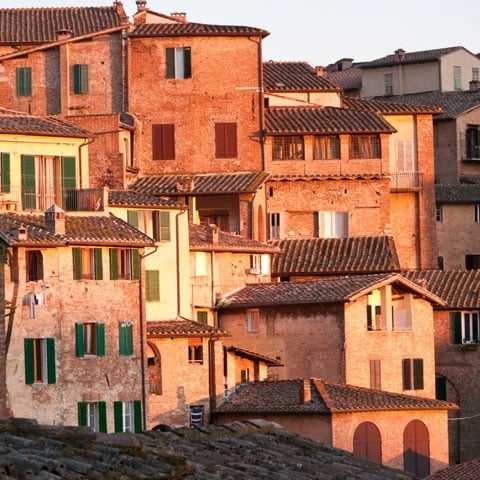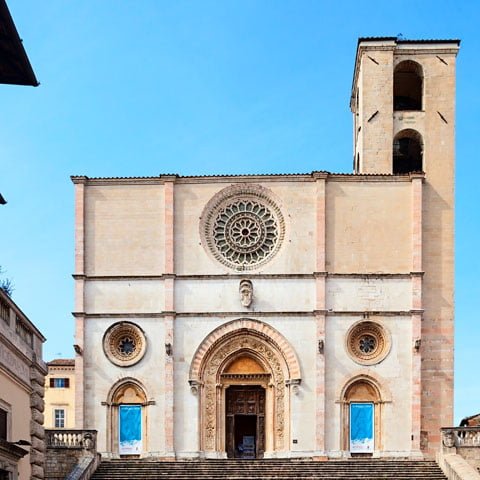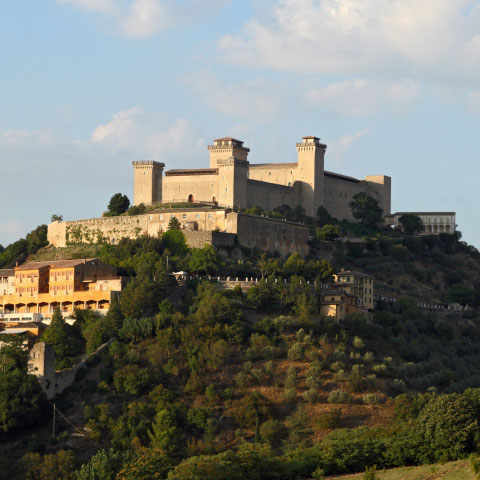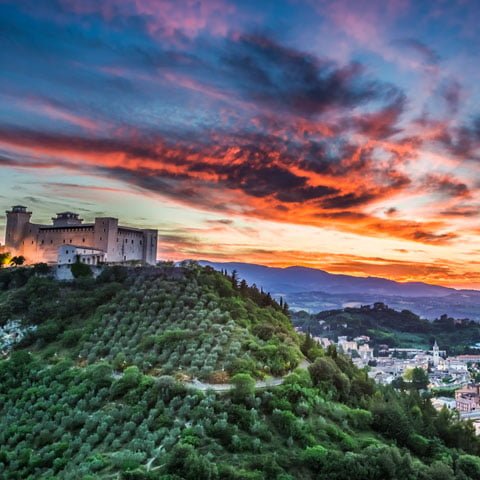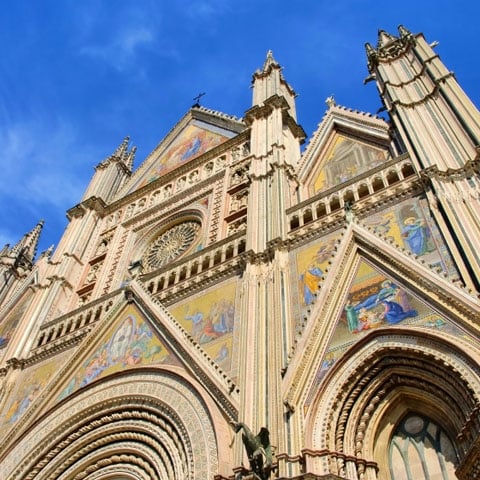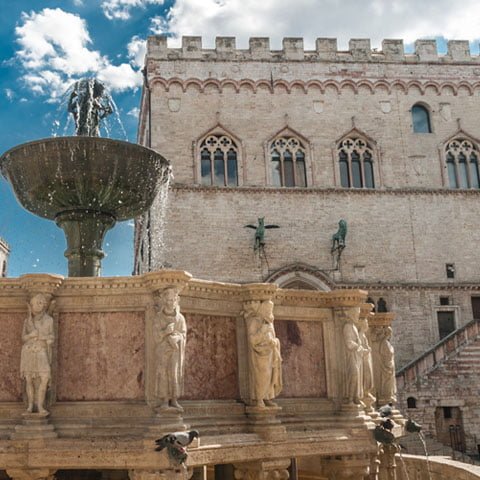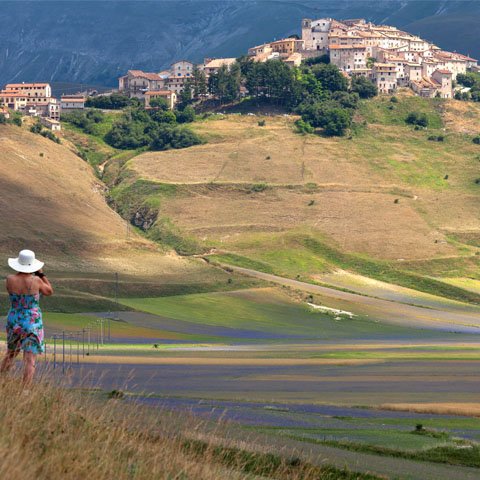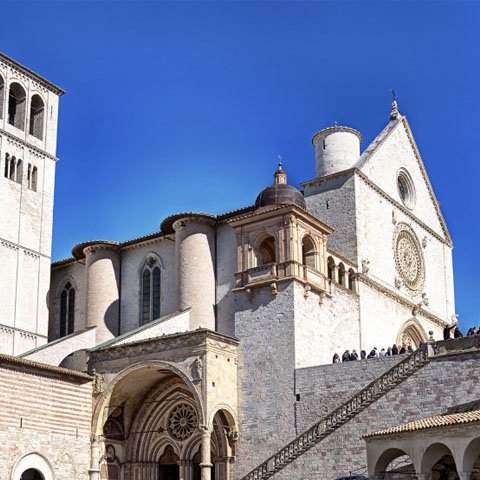A land seemingly frozen in time – reminiscent of old-world Italy – Umbria is known for its untouched evergreen landscape and traditional sensibilities. One of the smallest region in Italy and the only region which is completely surrounded by Italian land, Umbria is known as the “green heart of Italy.”
From the magnificent natural wonders of Monti Sibillini National Park to the calm countryside of Valnerina, the landscape of Umbria is everything one imagines when they dream of Italian, rustic, rolling hills. Offering even more outstanding views of nature than Tuscany, Umbria is truly a hidden gem – boasting everything from pristine landscapes, to historic, middle age castles, as well as Medieval villages, secluded monasteries, and charming hillside towns.
It is the landlocked landscape that keeps the spirit of ancient Italy alive, as it is removed from many outside influences. Quiet, yet passionate, Umbrian people are strongly connected to their cherished hill country. Here, the people live life slowly, immersing themselves in their town history, family traditions, and ancestral folklore. In addition, residents in Umbria exude an artistic spirit, evident in the various festivals that occur every year.
The Umbria Jazz Festival, one of the world’s most important jazz music events, has been held annually since 1973 and attracts some of the world’s greatest jazz musicians. In addition, the Spoleto Festival dei Due Modi (Festival of Two Worlds) is an annual music festival held each Summer. Founded by composer Gian Carlo Menotti, the purpose of the event was to bring American and European cultures together in a celebration of music, dance, drama, and other artistic outlets.
Nestled in the lush, green hills are the pride and joy of Umbria – it’s old-world style towns and villages. The region’s capital Perugia, and the smaller towns of Gubbio, Montefalco, and Todi feature cobblestone alleyways, intricately designed Romanesque churches, and hidden corners that are steeped in history. Spoleto, a hill town located in East Central Umbria, is striking with its Medieval monuments, Roman ruins, and ancient churches that truly capture the religious history of Italy. Orvieto, located just an hour and a half from Rome, blends the old with new, featuring a hilltop section of the city that is rooted in old-world Italy, featuring one of the country’s finest Roman-Gothic cathedrals perched on the plateau, and the lower section of the city which is bustling with modern day life.
Assisi is the most well-known town in Umbria and also happens to be one of its most beautiful. Famous worldwide as the birthplace and burial location of one of Italy’s two National Patron Saints – St. Francis – the city has been a pilgrimage site for religious individuals for centuries. The entire town has been designated an UNESCO World Heritage Site due to its well-preserved art and historic buildings – the most significant of which is the Basilica di San Francesco, so grand it can be seen from miles away. The basilica is the burial place of St. Francis and it features upper and lower churches which were decorated by the best artists, including Giotto, who is world renowned for his frescoes depicting the life of St. Francis.
A deeply religious region of Italy, Umbria is known for its Saints. In addition to St. Francis, Umbria is the birthplace of Saint Benedict of Nursia. The Patron Saint of Europe, St. Benedict is the founder of the Benedictine order of monks. Also born in Umbria was St. Valentine of Terni. Probably the most well-known saint in the world, St. Valentine is the protector of lovers and is celebrated globally on February 14th.
Umbria is a lush land of hilltop towns that combines jaw dropping architecture – stunning cathedrals, striking bell towers, charming Medieval villages – with portrait worthy landscapes – rolling hills, meadows bursting with wildflowers, and panoramic views – to create a region that truly appreciates history and encapsulates the best of ancient Italy.
GEOGRAPHY & CLIMATE
The only region in Italy that does not share a border with another country and does not have a coastline, Umbria is landlocked by the regions of Tuscany to the West, Marche to the East, and Lazio to the South. However, this does not limit the variety of landscape that Umbria offers.
The geography of the region features mountains from the Central Apennines, including Mt. Vettore – with the highest peaks in central Italy. Bordering the region of Marche, Mt. Vettore’s peak reaches over 2,400 meters. However, the most defining characteristic of Umbria’s topography are its two valleys – Valle Tiberina (Tiber Valley) and Valle Umbra (Umbrian Valley) – which split the region. The Tiber Valley runs through the Western part of Umbria from North to South, while the Umbrian Valley runs through the Spoleto area from West to East.
Though the region does not have a coastline, there are important water features throughout the Umbrian geography. The Tiber river, one of the world’s most important rivers, flows through the hills of Umbria and the Tiber Valley. There are also many lakes throughout the region – the most important of which is Lake Trasimeno. The fourth largest lake in Italy, it features three islands – Isola Maggiore, Isola Polvese, and Isola Minore.
The many different aspects of the region’s geography results in a varying climate, depending on where one is throughout Umbria. Generally, the climate is considered Continental or Mediterranean, with warm Summers and cold Winters, featuring snow particularly in the mountainous areas.
WHEN IN UMBRIA
Secluded from the rest of Italy, Umbria is the perfect, quiet escape for travelers looking to experience nature and the solitude of the countryside. The landscape, local culture, and people of Umbria entice guests to settle in and truly relax. With breezes traveling up from the valleys and the undeniable feeling of history that envelops each and every Medieval town, visitors to Umbria will feel comfortable and at ease. Explore the countryside or walk the ancient streets of famed cities such as Perugia or Spoleto.
Outdoor enthusiasts can experience the true beauty of Umbria’s natural landscape by hiking or biking the region’s many trails. Ranging from expert hikes through the region’s mountainous landscape to novice walking trails through fields of wildflowers, there is no better way to take in Umbria’s gorgeous scenery.
Religious travelers can visit the birthplace of St. Francis in Assisi and get in touch with their faith at any of Umbria’s countless cathedrals.
Meanwhile, foodies and wine connoisseurs can partake in a variety of food and wine tours that delight the senses of taste and sight, as most of the wineries are surrounded by stunning landscapes. One can also visit traditional Umbrian olive presses, which produce high-quality olive oil from neighboring groves.
No matter what one’s interests, there is a wide variety of experiences that await in Umbria – a unique region of Italy that captures the joy of a simplistic lifestyle that is of an older time.
The Umbria Region of Italy
Cities of Umbria
